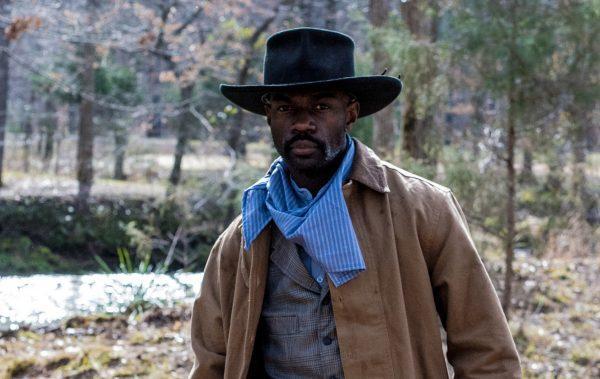The story of a real-life, historic Black-figure is an upcoming film! Hell on the Border stars David Gyasi, Frank Grillo and Ron Perlman.
You may recall, at one point, Morgan Freeman was working on a Bass Reeves miniseries at HBO a few years ago.
The official description for Hell on the Border reads: This epic, action-packed Western tells the incredible true story [of] Bass Reeves (Gyasi), the first Black marshal in the Wild West. Having escaped from slavery after the Civil War, he arrives in Arkansas seeking a job with the law. To prove himself, he must hunt down a deadly outlaw (Grillo) with the help of a grizzled journeyman (Perlman). As he chases the criminal deeper into the Cherokee Nation, Reeves must not only dodge bullets but severe discrimination in hopes of earning his star—and cement his place as a cowboy legend.
Watch the trailer below:
Born enslaved in 1838, Reeves’ master brought him along as his personal servant when he went off to fight with the Confederate Army, during the Civil War. When an opportunity presented itself, Reeves escaped for freedom after, reportedly, beating up his master following an argument over a card game.
Reeves fled to what later became the state of Oklahoma and lived among the Seminole and Creek Indians. After the war, he married and eventually fathered ten children.
He became a Deputy U.S. marshal working in Arkansas and the Indian Territory (the first Black one ever) when the existing U.S. marshal, James Fleming Fagan, who himself was a former Confederate Army officer, needed deputies to establish law and order in the region, and had heard about Reeves, who knew the area well and could speak several Indian languages. Fagan made him a deputy.
According to Art Burton (who wrote Black Gun, Silver Star: The Life and Legend of Frontier Marshal Bass Reeves), like the Lone Ranger, Reeves was a master of disguise, which he would use to track down wanted outlaws, and even adopting their clothes and mannerisms to blend in.
Burton says that Reeves also gave out silver coins as a sort of personal trademark, which is not unlike the Lone Ranger who uses silver bullets. Also, like the Lone Ranger, Reeves was an expert crack shot; So good, in fact, that he was barred from participating in shooting contests being that he had an unfair advantage. And he always rode a white or grey horse like the Lone Ranger.
Reeves had his own Tonto of sorts–a Native American man and tracker he often rode with when he was out capturing bad guys (close to 3000 in all, during his years as a marshal, 14 of them he killed). But Burton also draws the connection between Reeves and the Lone Ranger with the fact that many of the outlaws Reeves captured were sent to a federal prison in Detroit. And by some strange coincidence, the Lone Ranger was first introduced to the public in 1933 on a weekly radio show broadcast from WXYZ in Detroit.
Perhaps the stories about Reeves told by those convicts in that Detroit prison circulated around for years and eventually reached the ears of the creators of the Lone Ranger who used them as the inspiration for their fictional creation. Sadly, Reeves’ years as a deputy came to an end in 1907 when the territory became the state of Oklahoma, which strictly followed Southern states’ segregationist Jim Crow laws, took away Reeves’ badge, and then he retired. He died three years later in 1910.
Hell on the Border will be available in select theaters and video on demand on Dec. 13.
READ MORE:
How HBO’s ‘Watchmen’ Recreated The Tulsa Race Riots Of 1921 In Its Series Premiere
Photo: Lionsgate
From Harlem to Hollywood, get the Black entertainment news you need in your inbox daily.

